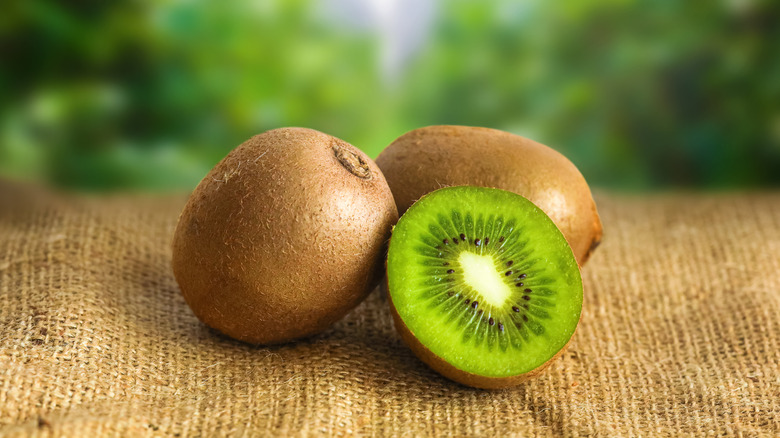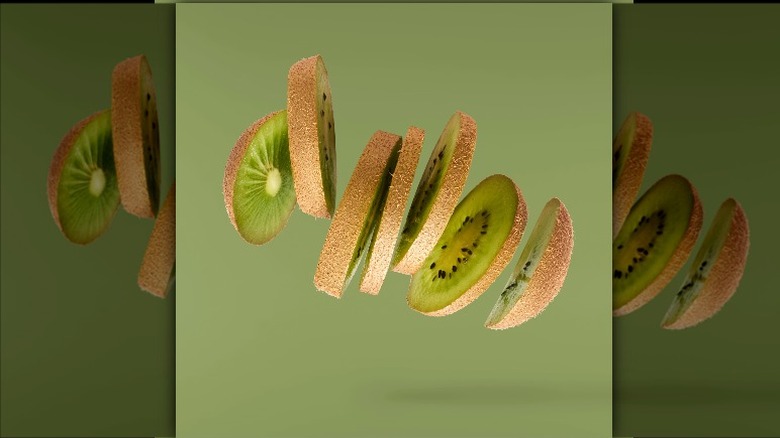Should You Eat The Skin Of Kiwi?
The kiwi is an odd-looking little specimen — all small and fuzzy. It hardly invites you to sink your teeth into its furry, drably-hued flesh. While plums, pears, and apples have smooth and shiny surfaces, perfect for biting into, hairy produce holds less appeal. While America has embraced this demure orb based solely on its yummy innards, there remains much that you may not know about the kiwi fruit.
For instance, the Wisconsin Department of Public Instruction states that the kiwi boasts the title of "the most nutrient dense fruit," offering double the vitamin C that an orange provides. It originated in China and was originally called the "macaque fruit," signifying the monkey species' penchant for kiwis (via Time). According to Zespri Kiwifruit, when New Zealand first started to grow them, they called them "Chinese Gooseberries," but since the gooseberry was an unpopular fruit in many places they decided to rename it. In 1959, this tiny, fuzzy fruit of a non-distinct color was named after a flightless bird with similar qualities — the kiwi. And, if you asked for a kiwi in New Zealand things could get confusing. The nickname for people from this nation is Kiwi, the bird is a kiwi and the fruit will forever be called a kiwifruit.
But what about this fruit's furry exterior? Can humans actually consume kiwi skin? The answer will likely surprise you and may even scare you a bit.
The kiwi skin is totally edible and nutritious
While it may not look appetizing, the kiwi's outer rind is completely edible. Who knew? In fact, Spoon University offers up a practically bulletproof argument supporting the skin's consumption, stating that it boasts "more vitamin C and three times more fiber" than the actual insides. Women's Health chimes in, saying that it also offers a healthy dose of folate and vitamin E.
So how do you go about eating the whole kiwi — skin and all? Once you've psychologically prepared yourself for this hairy little mouthful, you will need to ensure that your kiwi is thoroughly scrubbed. Taste of Home recommends purchasing an organic variety to avoid chemicals and suggests that you wash it well under cold water. If you're feeling particularly brave, bite in and enjoy. If you're not quite ready to rip the proverbial hairy band-aid off just yet, there are ways to ease into eating kiwi skin. Women's Health says you can throw the whole thing into a blender and make a smoothie (kiwi and pineapple mojito, anyone?). You may also choose a much-less-follicle-covered yellow variety.
Before you know it, you'll be eating kiwi fur without even batting your eye. After all, you eat peaches and they're fuzzy-ish.

